 MICHAEL ECKERSON
.
March 21, 2023
.
All Feature Vehicles
MICHAEL ECKERSON
.
March 21, 2023
.
All Feature Vehicles

It’s remarkable how much Tom “Mongoo$e” McEwen influenced what we now know as drag racing. Today’s crescendo of excitement on the strip with bold racers who regularly top 300 MPH. Racers like Force, Pedregon and Hight to name a few, who share the legacy of the lane with the pioneers of the sport like Garlits, Muldowney, Bernstein and yes, Don Prudhomme and Tom McEwen to name a few.
Time has a tendency to fade the memories of those who were caught up in the fever that emanated from The Snake and Mongoose rivalry. Even today’s race fans who were not of a certain age in this Golden Era might not know how lackluster its beginnings were. Drag racing back in the early days was made up of a rag-tag group of enthusiasts. Greasy palmed young men who wrenched on their rides until race day. Then they would meet at race tracks like the venerable Lions Drag Strip in Santa Ana to test their mettle and their machines.




It was in this era that Tom McEwen began forging who we would know him to become – the legendary Mongoo$e. In the early days of his childhood however, Tom struggled with the loss of his father who was a test pilot and whose life was lost in a flight accident in Panama. Tom was only two years old at the time.
Not long after the loss of their father, Tom’s brother was born in Panama. Their mother soon moved to Long Beach, California in the early 40s where their grandmother came out from Missouri to help raise the boys.
Tom began racing at the age of 16 with a 1953 Oldsmobile at America’s very first drag strip, the Santa Ana Drag Strip The strip at the Orange County Airport California.
As time passed, Tom honed his drag racing skills in gas coupes, altereds, gas and fuel dragsters, and later, Funny Cars and Top Fuel dragsters. Each one more powerful than the last.
Back then, drag racers lived a gypsy life, traveling from one town to another, promoting ticket sales by doing interviews with local radio stations and newspapers. There wasn’t the kind of big money in drag racing then like there is today. Drivers often won parts, a case of oil and sometimes a savings bond.
…race fans who were not of a certain age in this Golden Era might not know how lackluster its beginnings were



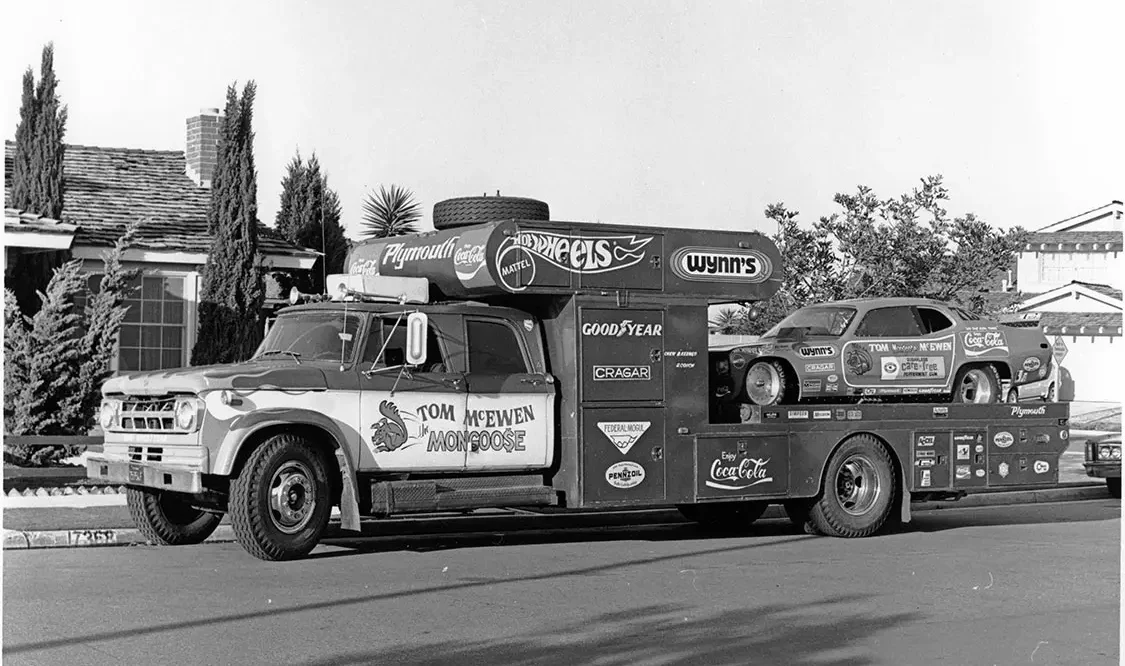
Tom McEwen continued to race with moderate results. In 1963, McEwen achieved his first noteworthy success, posting a second place finish at the Bakersfield March Meet in California. He also drove the Donovan Engineering Special dragster, and it was in this car that he first raced against Don “The Snake” Prudhomme. McEwen won the race against Prudhomme at Lions Drag Strip on September 12, 1964, spawning what may be the most famous match-race pairing in the history of drag racing.
Later in 1964, Ed Donovan, a drag-racing pioneer who was known as the Mole, came up with a nickname for Tom McEwen. Every driver needed a nickname. Don Prudhomme and Tom McEwen were racing each other a lot at this time. Prudhommme’s nickname was The Snake because he was a tall kid and known for his great reflexes. Ed Donovan, told Tom about Rikki-tikki-tavi, the name of the mongoose in Rudyard Kipling’s Jungle Book. Tom found it funny that a mongoose is a big, ugly, rat-looking thing, so Prudhomme and McEwen had a friend do some artwork and started calling themselves the Snake and the Mongoose. And so it began.
McEwen became the spokesman for the competitive rivalry, but the quieter Prudhomme actually won more races. They were just a match made in heaven,” said Tom Madigan, a former drag racer who wrote a book about the rivalry, “Snake vs. Mongoose: How a Rivalry Changed Drag Racing Forever.” Their match races became genuine showdowns. The rivalry grew between the two drivers — McEwen’s Plymouth Duster and Prudhomme’s Plymouth Barracuda — the sport changed forever.




In 1970, McEwen talked the Mattel toy company into producing 1:64 scale Snake and Mongoose cars as part of its Hot Wheels die-cast toy line — and thereby becoming drag racing’s first sponsor outside the automobile industry.
“The licensing, the merchandise, the racing, it just seemed like it all happened at the same time,” said Tony Pedregon, a fellow NHRA funny car driver. “I don’t know that there were too many kids that are my age that didn’t have the Snake and the Mongoose Hot Wheels set.”
In 1974, Skip Hess asked him if he could use Mongoose for his new line of performance bicycles. Prudhomme and McEwen struck a deal with Hess, a drag racer turned businessman whose company became a billion-dollar business. Mattel withdrew their sponsorship in 1973, but the two drivers had drawn so much exposure they were able to form their own company, Wildlife Racing, that attracted other corporate sponsors like Coca-Cola. Soon, other teams had non-auto logos splashed on their cars. A trend that continues today.
There is no question, Mongoo$e is one of the best-known drivers in NHRA history. He was voted Number 16 on NHRA’s Top 50 Drivers and was inducted into the Drag Racing Hall of Fame and the Motorsports Hall of Fame of America.



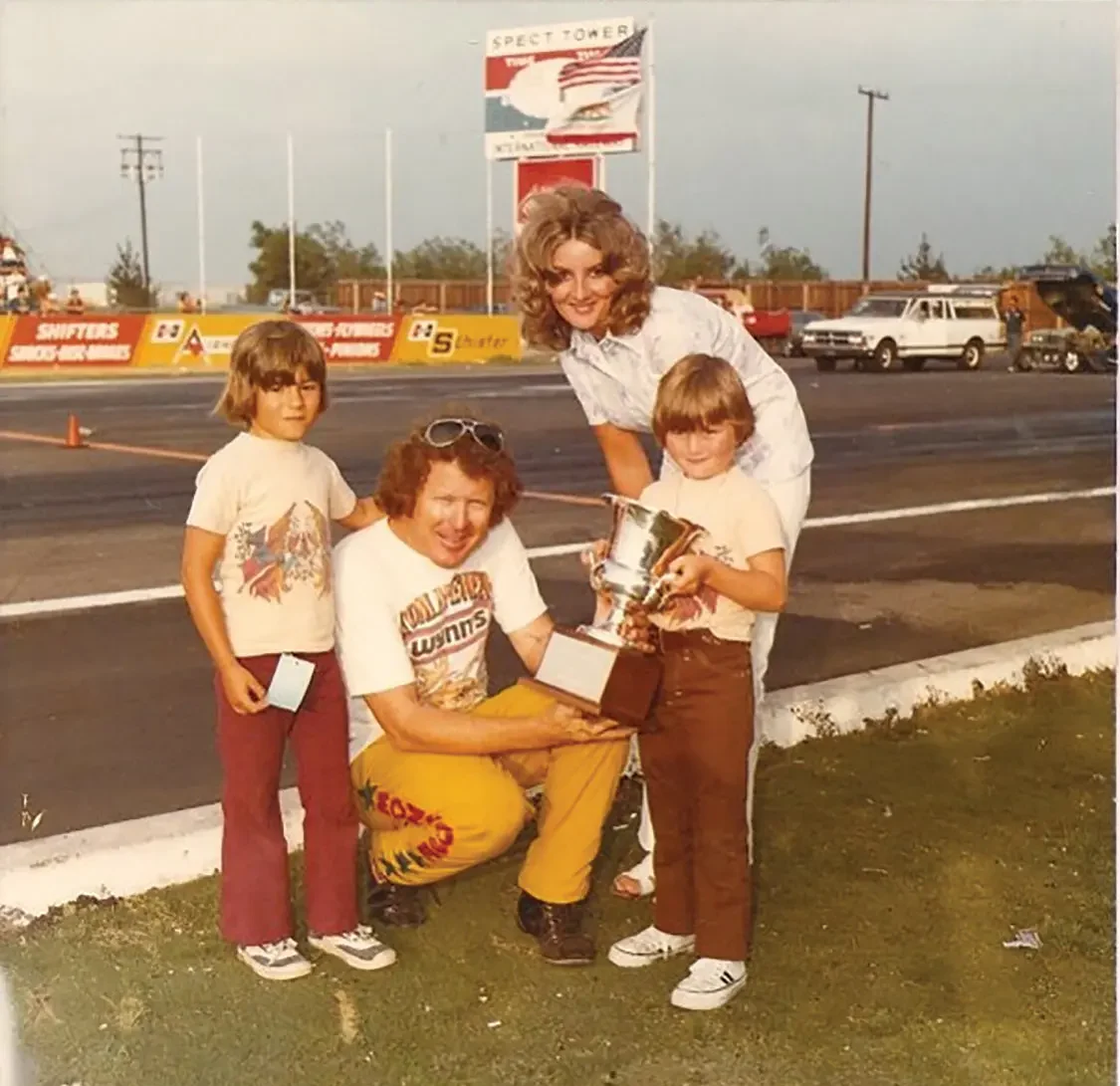
The Mongoose” vs “The Snake” is known as the greatest rivalry in drag racing. Even though Prudhomme won more of the races and four NHRA funny car Championships, McEwen said he won the “best race ever” between the two, at the United States Nationals in 1978, just four days after the death of his son, Jamie.
In an recent interview, Tom is quoted saying; “These top fuel cars now produce 10,000 to 12,000 horsepower. You know how you hear advertisements [that] you can buy a new car that will run 0 to 60 in 3 or 4 seconds? These top fuel dragsters run (zero to) 150 mph in less than a second from a standing start. The noise and the power shakes the ground. It’s an experience you can’t experience on TV. You’ve got to be there.”
Yes, sir. We do indeed.
Thank you for all that you accomplished for the sport, the fans and the shared experience.
You are missed.

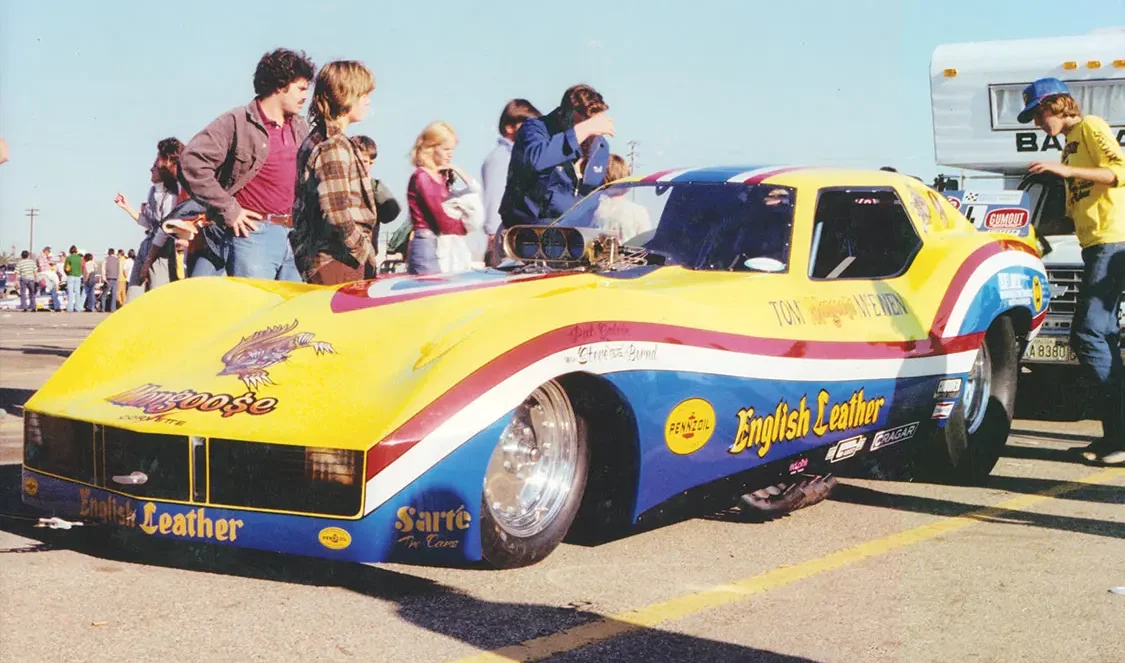


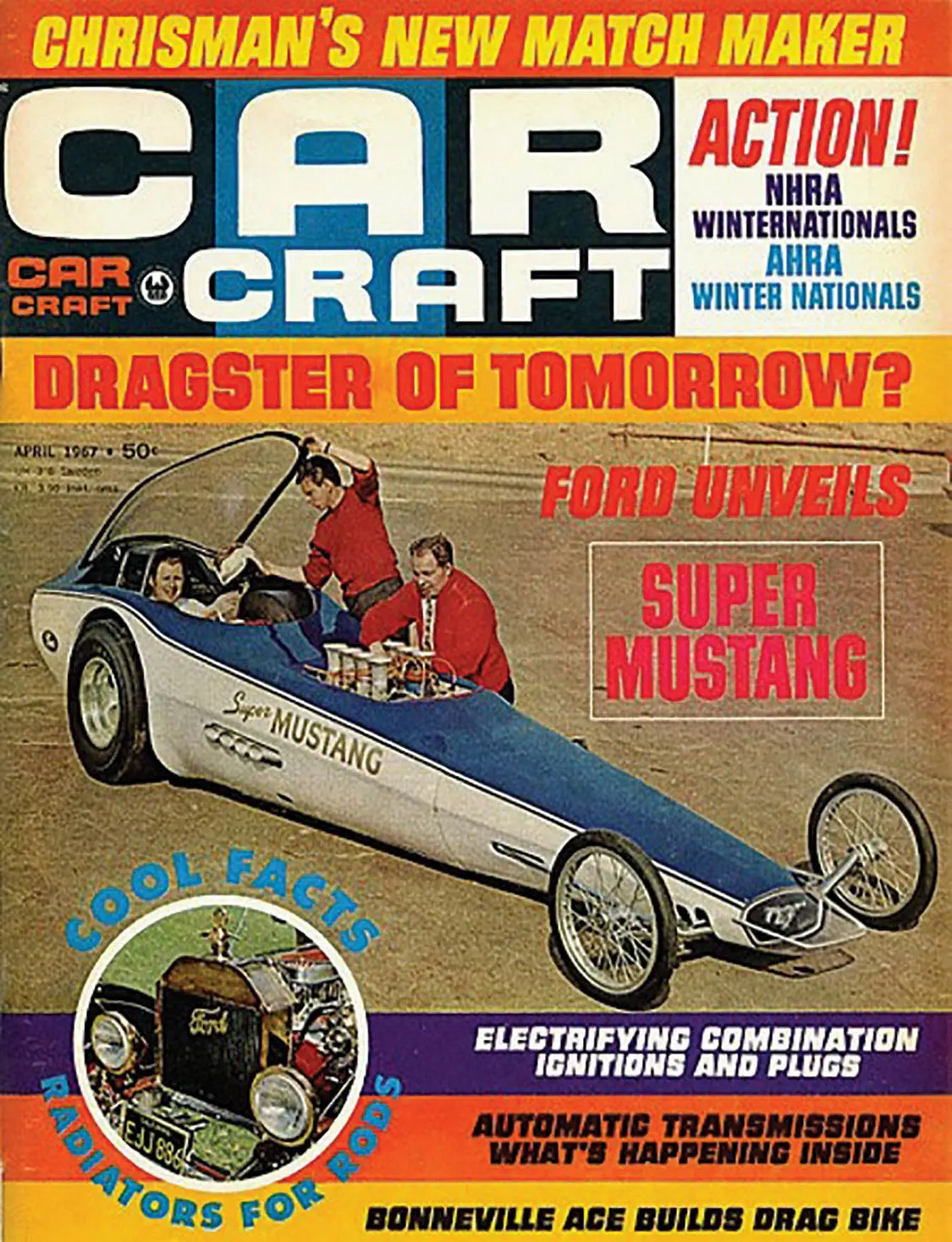






Stories from the road by Peter J Ward of Drag Racer Magazine
In April of 1987 R. J. Reynolds unveiled its’ premiere Winston All-Star event, for drag racing, hosted at the Dallas Motorplex. It featured the sport’s Top Ten, the best of the best. Stick and ball sports had their all-star players and events, this was to be drag racing’s version. Invitations were awarded to the Top Ten, based upon the previous season’s finishing order. Following the event’s qualifying sessions that ten was culled to a final eight car field.
’86 was a good year for the Mongoo$e, he finished 7th in points. On the other hand, Raymond Beadle, who was going through a thorough transition with his racing business, didn’t fare as well, finishing out of the top ten.
Come ’87 Goo$e was experiencing a major gremlin in the Coors Corvette. He launched more superchargers (blown off the top of the engine due to engine failure) than NASA was launching rockets. Poor Buster Couch, NHRA’s illustrious official starter, who had experienced all types of starting line mayhem, was even getting guy shy when Goo$e rolled up to the starting line. Needless to say, a trip to Dallas for the All-Star event would have been an exercise in futility. As usual, with Dale Emery tuning, the Blue Max was still hauling ass. So, Goo$e and Raymond struck a deal. He provided his entry slot which went with the driver and Raymond provided the Blue Max Pontiac Trans Am…and thus was born “The Blue Goose”. Tom quickly acclimated himself to the new ride, qualifying second with a 5.45, his quickest personal ET.


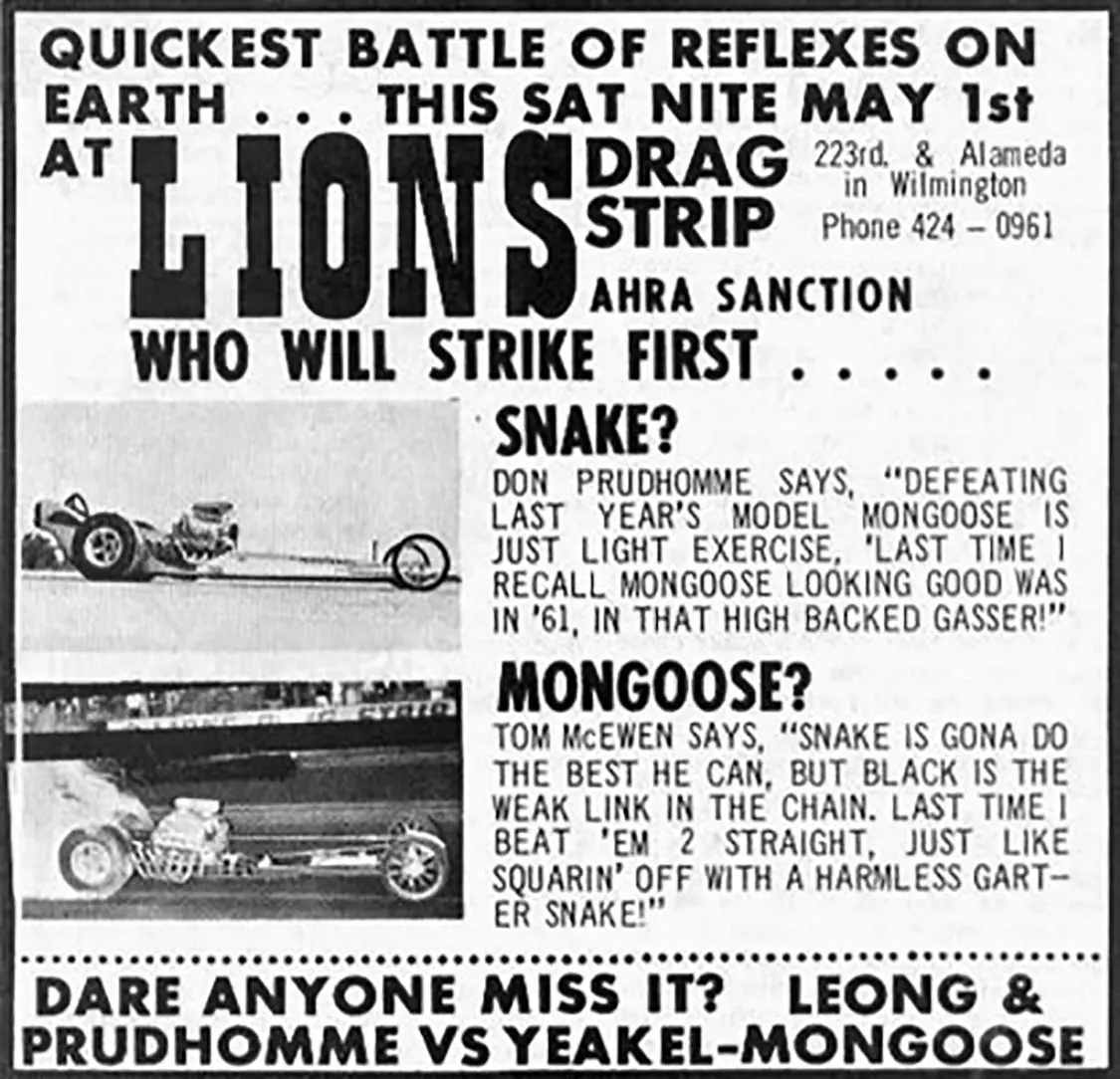


Come race day, the weather was cool and gloomy, with rain threatening, but the all concrete track was in killer form with traction abundant and atmospheric conditions perfect. In the first round Goo$e faced off with John Force, who had yet to win a major national event, and on that day the trend continued. John got out first, but the Blue Goose flew by at half track. In the second round, Goo$e proved to be a bad guest, beating the event’s host and track owner, Billy Meyer. Naturally Raymond and the boys were thrilled with how well the plan was working. But Goose was conferring with Emery, concerned with how light the Trans Am’s front end was.
In the event finals it was McEwen tuned by Dale Emery facing off against Kenny Bernstein tuned by none other than Dale Armstrong. Goo$e left first and was leading by a sizeable margin, but going into the lights, with the Blue Goose’s nose floating off the surface, he was forced to lift. Bernstein rocketed by in the lights for the win. In the process, the quickest side by side funny car race, in history, was contested: Bernstein’s 5.36 to McEwen’s 5.42.
Thus ended the tale of Tom McEwen, Raymond Beadle and the Blue Goose. A blink of eye away from a story book finish.
1937
Born January 14, 1937
1953
McEwen gains early experience in a variety of rides, beginning with a ‘53 Oldsmobile at Santa Ana Dragstrip in Irvine, and a ‘54 Olds at Lions Dragstrip in Long Beach, California. He went from the stock ranks to gas coupes, altereds, and eventually dragsters and funny cars. Noteworthy cars he drove were the Stone-Woods-Cook ‘50 Olds fastback, the Bader & Ferrara Cadillac-powered Crosseyed Crosley, Art Chrisman’s Hustler II, the Bud Rasner and Gary Slusser Fiat coupe, Dick Rea’s Chrysler-powered blown gas dragster, and Gene Adams’ Albertson Olds.
1962
McEwen continues relationship with Adams and drives Adams’ Shark. Significant because it was one of the first dragsters to use a streamlined body with an enclosed parachute pack.
1963
McEwen achieved his greatest success to date when he posted a runner-up finish against Art Malone at the Bakersfield March Meet in California in the Broussard-Garrison-Purcell-Davis car.
He also drove Donovan Engineering’s Special dragster. This was the car he first competed against Don Prudhomme with.



1964
McEwen won his race against Prudhomme at Lions Dragstrip on September 12, 1964.
McEwen beat Prudhomme’s famed Greer-Black-Prudhomme car in two straight sets, paving the way for what may be the most famous match-race pairing in the history of drag racing. Later in 1964, McEwen drove Lou Baney’s Yeakel Plymouth-sponsored dragster to victory at the 32-car UDRA meet at Fontana Raceway in Fontana, California. He also took Top Fuel titles at Lions Dragstrip and Pomona Raceway.
1965
Because their first get-together had received so much attention, two more races between McEwen and Prudhomme were staged at Lions Dragstrip in 1965.
McEwen drives the Yeakel Plymouth dragster to victory over Prudhomme and his new ride, the Leong-owned Hawaiian, two rounds to one in the first – then McEwen loses in two straight sets in the second.
1966
McEwen and Prudhomme raced each other only once in 1966, at the Winternationals, site of their first national event meeting. They would not meet again for four years. McEwen won the 1966 Hot Rod Magazine Championships at Riverside Raceway and then went on to win the 1968 Stardust National Open in Las Vegas.
1968
McEwen records his lowest ever elapsed time to date with a blistering 6.64 at the Orange County PDA Meet in 1968.
McEwen also continued to build on his reputation as a colorful promoter. The Plymouth Hemi Cuda he unveiled in 1965 was featured in every major car magazine. He convinced the Southern California Plymouth Dealers Association to support him and displayed the car all over the West Coast. In 1967, McEwen took the same approach with one of drag racing’s great one-shot wonders: Ford Motor Company’s Super Mustang. When it made its highly anticipated debut at the Winternationals, it generated significant publicity.
Profound changes in technology and public interest have accompanied Mongoo$e in his journey from early drag racing meets to Hall of Fame recognition



1969
McEwen’s strong promotional talent and Prudhomme’s success on the racetrack eventually led to the formation of a national touring team sponsored by Mattel and, in mid-1969, McEwen and Prudhomme corporately became Wildlife Racing.
The Mattel deal ran from 1970 through 1972, and in 1973, Wildlife Racing secured Carefree sugarless gum as a sponsor. McEwen and Prudhomme dissolved their corporation at the end of the 1973 season.
1972
McEwen won his first major event when he dominated the Top Fuel field at the Bakersfield March Meet.
He scored his first NHRA national event victory A year later by topping the quickest funny car field in history at the SuperNationals at Ontario Motor Speedway.
1978
He went on to win four more national events, including his dramatic U.S. Nationals funny car victory over Prudhomme in 1978, following the death just a few days earlier of his son, Jamie.
1984
He wins the prestigious Big Bud Shootout.
1991
Wins Top Fuel at the 1991 Summernationals.
1992
Tom McEwen retires and raises quarter horses — all of which, he had said, have Mongoose in their names. McEwen continues to influence drag racing and is publisher of Drag Racer Magazine, as well as attending car shows and doing promotional work for a long line of admirers, and was a semi-regular presence at races. McEwen also had a big hand in helping put together the NHRA Legends Tour.
2018
Mongoo$e passes.


Share Link